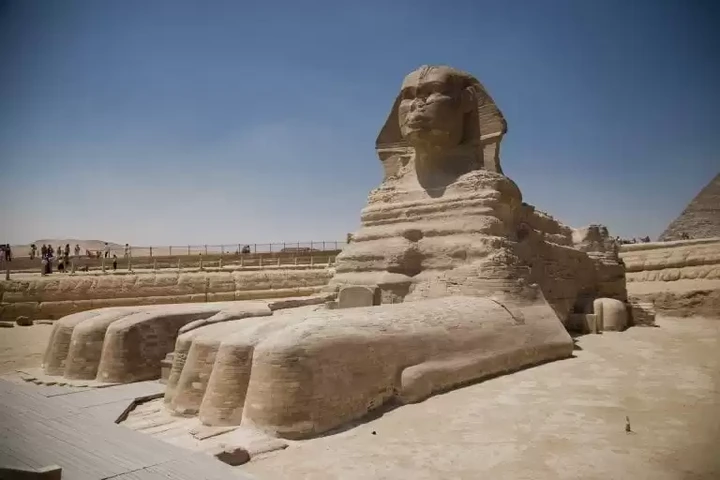It would seem as though Egyptian sculptures, especially that of Kings are often found with broken noses.
One then wonders what the purpose behind this constant display of what seems like cultural representation is.
I mean, surely there must be a reason behind why this action would be common, especially since it’s common among royal statues.
Over the years, some archaeological research has led some scientists to notice that many ancient Egyptian Pharaoh statues lack noses.
Initially, their first thought was that this could be due to some basic reasons, like the fact that the nose happens to be a part of the body that stands out.
Since the nose happens to stand out, there is a possibility that for the thousands of years that some of these statues have stood, the noses may have suffered some destruction with time.
However, with time, we got to find out that there is more to this than meets the eyes.
The story and idea of Egyptian broken noses go farther than one would think.
As Adela Oppenheim, curator of the Egyptian department of the Metropolitan Museum in New York found out, the process of denying Egyptian Pharaohs of the nose was actually quite deliberate.
It was an action that was more intentional than many would think. It should be noted that in ancient Egyptian, there has always been the idea among sculptors that statues also posed vitality and could thus influence what is happening in our reality.
Interestingly, the belief is that this ability to reach into our reality is channeled into the idea that the only way these statues can possess these powers of influencing our reality, is through their breath which is given to them through the nose.
Now they believe that if you deprive a Pharoah of his nose, you automatically deprive him of his influence in the afterlife, and this world.
What you will find most interesting about how the Egyptians worked their art is how they often performed certain rituals to the effect.
Think about this for a second, the Egyptian Pharaohs through their statues are supposed to influence our world, influence supposedly channeled through their breath and therefore their noses.
However, to give powers to these statues, Egyptians often Perform a special ritual called “revitalization”, also known as the ritual of “opening of the mouth.”
In this process, the eyes, eyebrows, mouth of the Pharaoh’s statues are painted on the sculpture, nostrils were drawn.
Immediately these processes are complete, it is believed that they have been fully integrated back into our world, channeling them from the afterlife.
The question that then presents itself is simple, why would anyone take away the Supposed influence of the Pharaohs in this world by getting rid of the very thing that helps them stay influential in our world.
At first one would think this would have been done by their contemporaries, perhaps because they weren’t pleased by the actions of their kings but it doesn’t really make sense if properly considered. You can’t hold a hammer to your king’s statue and not be caught?
However, some have theorized that the broken noses of most Egyptian Pharaohs can be traced back to thieves and work-seekers who come into the treasuries for desecrating and stealing.
Apparently, this could have been done by these thieves so they could steal without being interfered with by these pharaohs who have been said to influence this world through their statues.


